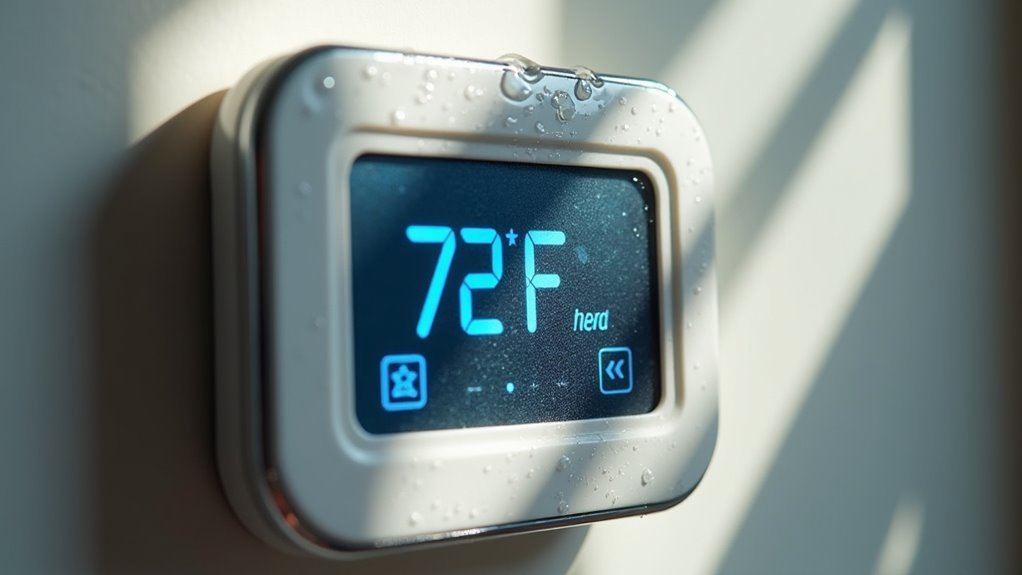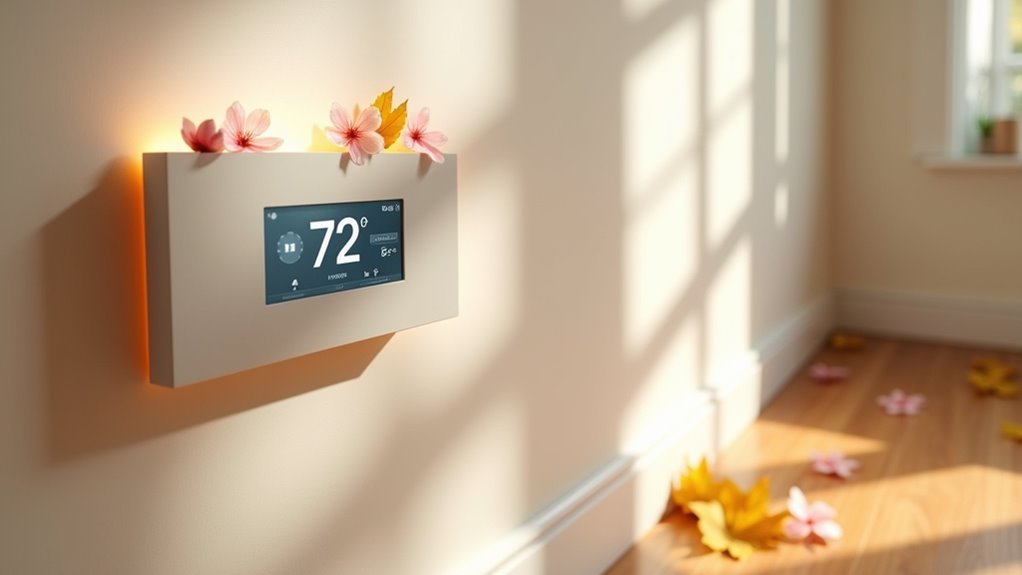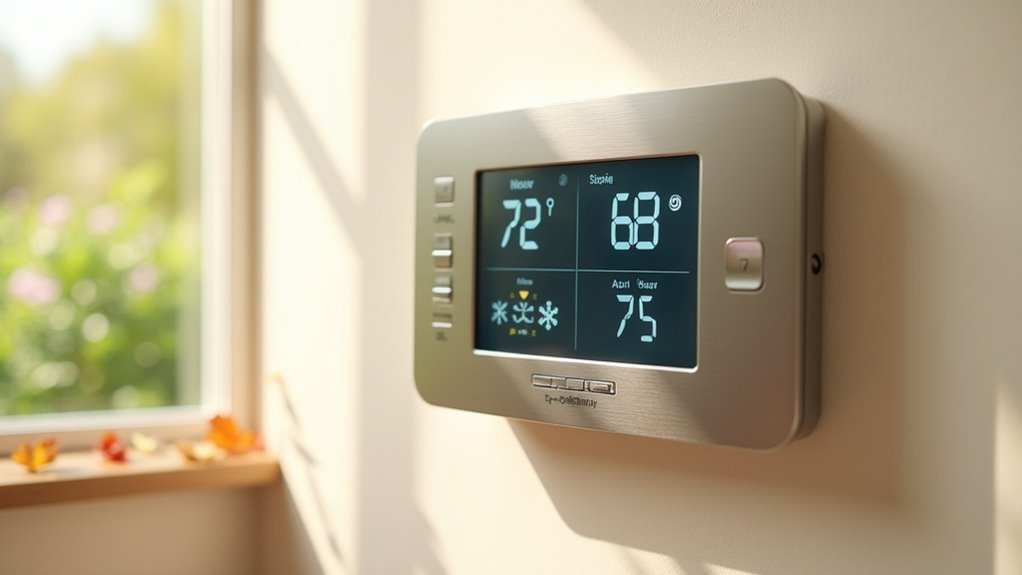You’re probably adjusting your thermostat constantly throughout the year, fighting seasonal temperature swings while watching your energy bills climb. Most homeowners stick with the same settings year-round, missing significant opportunities to optimize both comfort and costs. Smart seasonal programming can transform your HVAC system from an energy drain into an efficient climate control solution. The key lies in understanding how different weather patterns affect your home’s heating and cooling needs.
Summer Cooling Program: Maximizing AC Efficiency During Hot Weather

When summer heat intensifies, setting your thermostat to 78°F while you’re home creates the perfect balance between comfort and energy efficiency. This temperature provides ideal comfort while allowing your air conditioning system to operate at peak performance.
To maximize AC efficiency during the summer months, adjust your thermostat to 85°F when leaving home, delivering substantial energy savings without compromising your system.
Enhance your cooling efficiency by running ceiling fans alongside your AC unit. This combination allows you to raise thermostat settings while maintaining the same comfort level.
Close blinds during peak heat hours to reduce thermal load on your system. Monitor and adjust your thermostat throughout the day based on activity levels for maximum efficiency and comfort balance.
Winter Heating Program: Optimizing Warmth While Reducing Energy Costs
As temperatures drop and heating systems take center stage, your winter thermostat strategy requires a different approach than summer cooling methods. Set your thermostat to 68°F during active hours for ideal comfort and energy efficiency. When away or sleeping, lower settings to 60-64°F to save money on heating costs while maintaining safe indoor temperature levels.
| Time Period | Thermostat Settings | Potential Savings |
|---|---|---|
| Home/Awake | 68°F | Baseline comfort |
| Away/Sleeping | 60-64°F | Up to 10% reduction |
| 8-hour setback | 7-10°F lower | 5-15% savings |
A programmable thermostat or smart thermostat automates these adjustments, helping improve heating costs without sacrificing warmth. Never drop below 64.4°F to avoid health risks during colder months.
Spring and Fall Transition Program: Balancing Comfort During Mild Weather

Spring and fall present unique thermostat challenges since outdoor temperatures fluctuate dramatically throughout the day, making it difficult to maintain consistent indoor comfort without wasting energy.
Set your thermostat to 68°F when you’re home and awake to balance comfort needs with energy efficiency during these shifting seasons.
You’ll want to lower thermostat settings during milder weather to save energy when outdoor conditions are naturally comfortable.
Enable Auto mode on programmable thermostats for peak performance that automatically responds to your daily routine.
Monitor and frequently adjust settings to minimize unnecessary heating and cooling cycles.
Employ a slight temperature deadband to prevent constant system switching, maintaining comfort and efficiency while reducing energy consumption during unpredictable weather changes.
Frequently Asked Questions
What Is the Best Year Round Thermostat Setting?
You’ll save most by setting your thermostat to 68°F in winter and 78°F in summer while home, then adjusting down to 60-64°F or up to 85-88°F when away.
What Is the Most Energy-Efficient Thermostat Schedule?
You’ll maximize efficiency by setting your thermostat to 68°F when home, dropping it 7-10 degrees when away or sleeping for eight hours daily, achieving 10% annual savings.
Is 72 Too High for a Thermostat in Winter?
You’ll pay more for heating at 72°F compared to the recommended 68°F. While it’s comfortable, you’re sacrificing energy efficiency and increasing costs. Consider lowering it to save money.
What Temperature to Keep a House in Winter to Save Money?
You’ll save money by setting your thermostat to 68°F when home, dropping it to 60-64°F while sleeping or away, and 55°F for extended absences to reduce heating costs considerably.





Leave a Reply